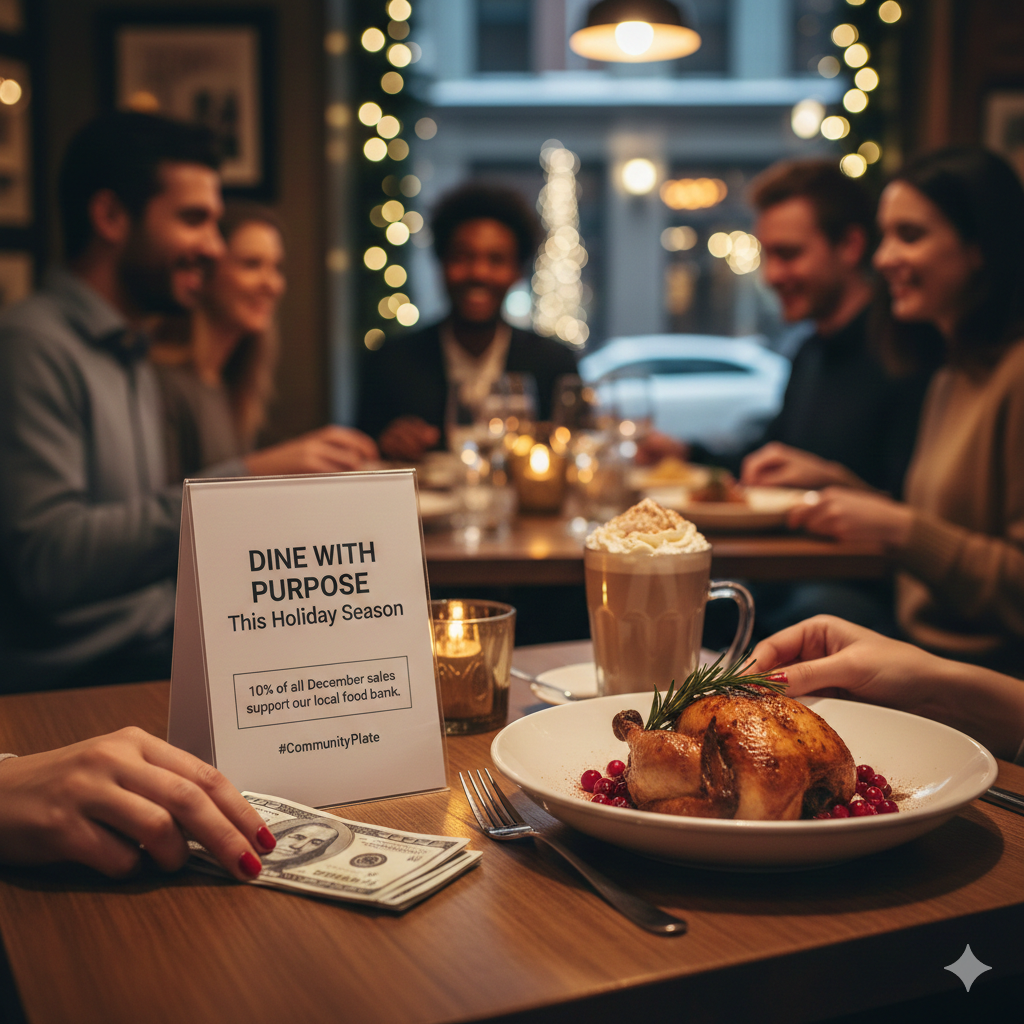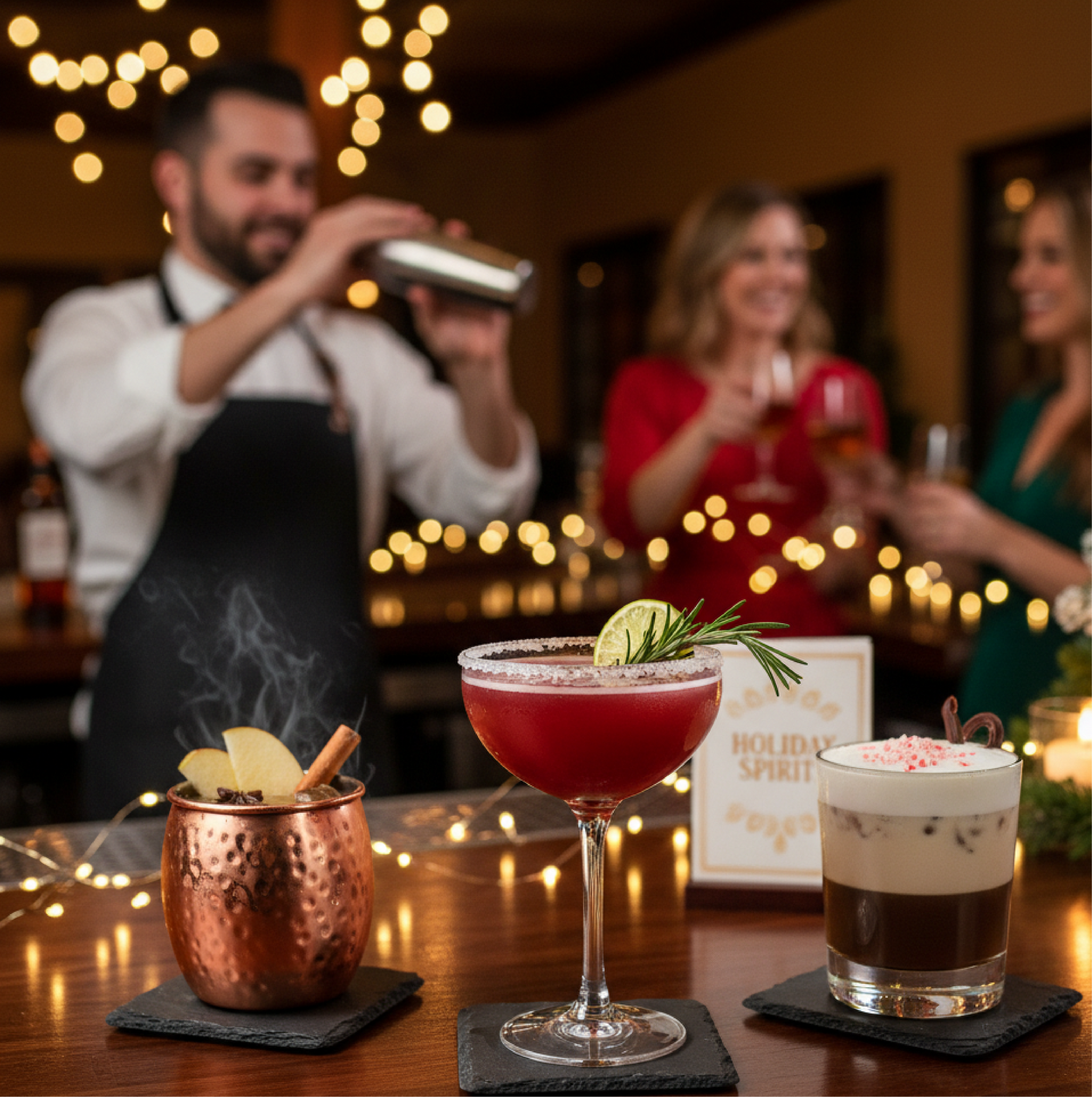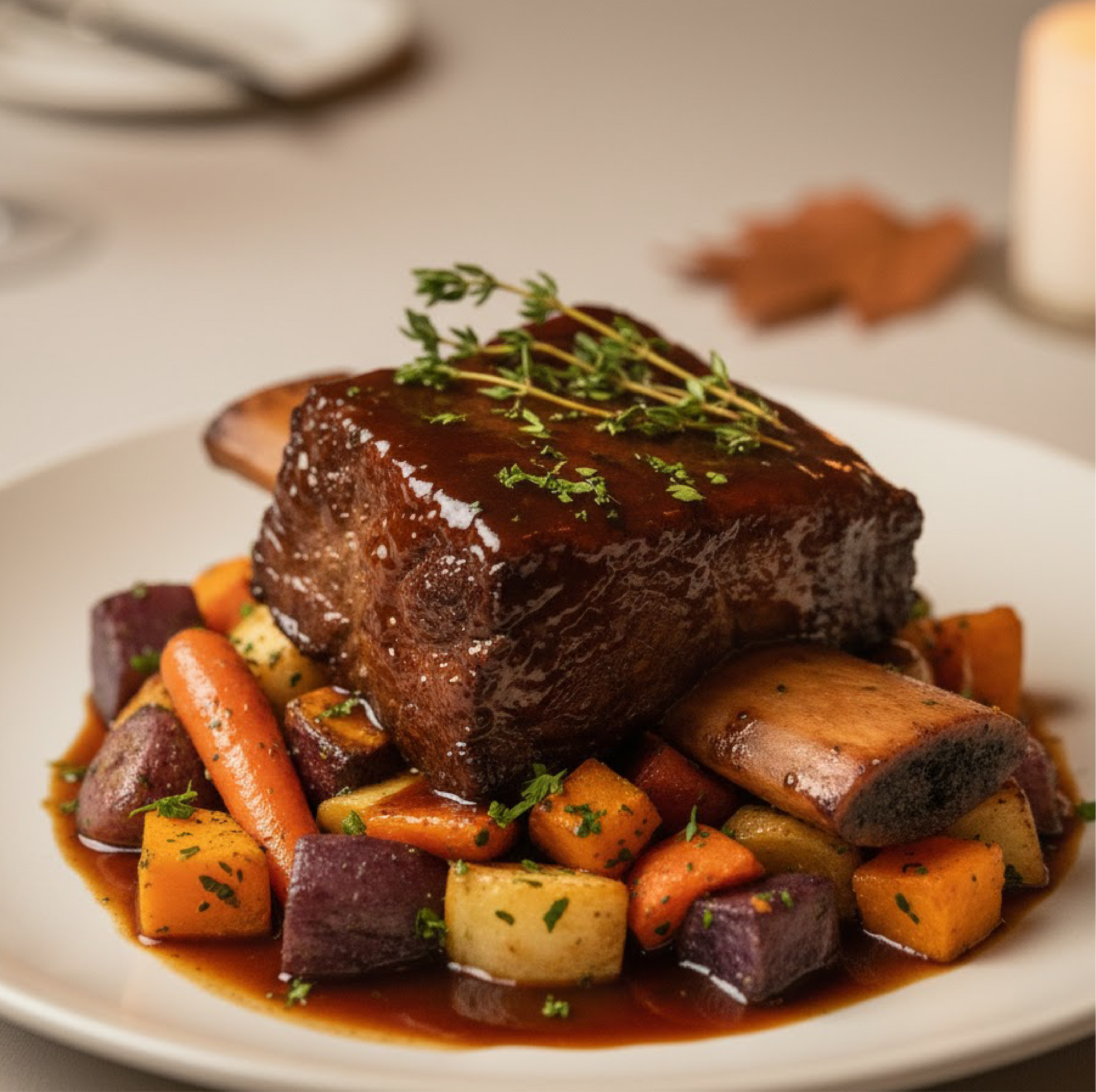Blog
Why Zero-Waste and Sustainability Marketing Define the Best Restaurants of 2025
November 18, 2025
The Competitive Edge: Why Zero-Waste and Sustainability Marketing Define the Best Restaurants of 2025
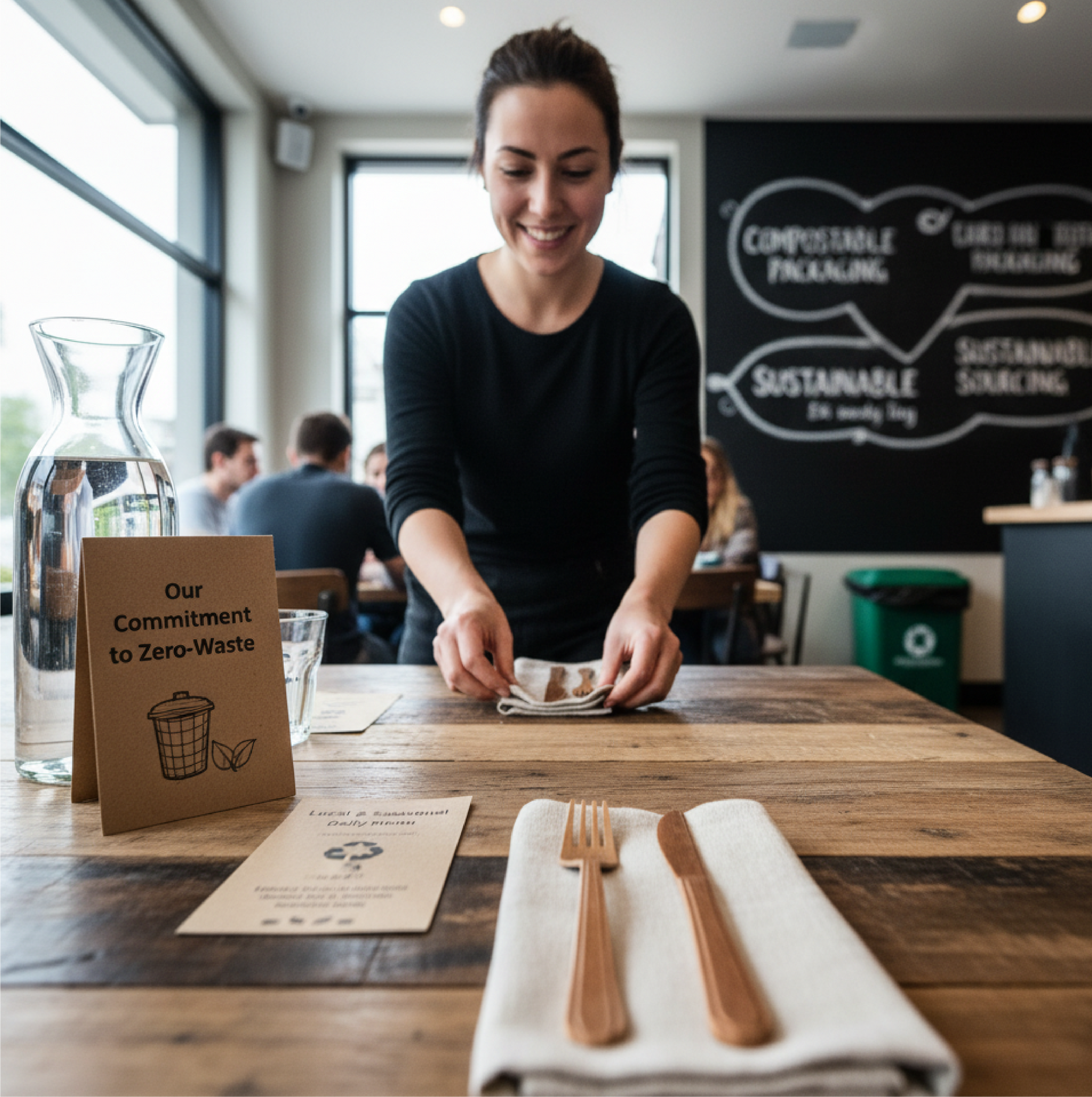
The restaurant industry is at a pivotal crossroads. Amidst rising food and labor costs, the search for a true competitive advantage has led savvy operators away from flashy, temporary trends and toward a fundamental realignment of their business model: sustainability.
In 2025, a commitment to environmental stewardship—specifically through zero-waste restaurant practices—is no longer a niche concept or a mere feel-good initiative. It is a core consumer expectation, a powerful cost-saving tool, and the single most compelling driver of brand loyalty and revenue growth.
The message is clear: the most profitable restaurants of tomorrow will be the most sustainable ones. Restaurant consultants at Goliath Restaurant Consulting recognize that embracing these green restaurant practices is the essential strategy for resilience, relevance, and long-term success in a crowded market.
1. Consumer Expectations: The Zero-Waste Demand Driving Dining Choices in 2025
The modern diner views their food choices as a reflection of their personal values. This shift is most pronounced among younger generations who see sustainability as a non-negotiable factor.
The Decisive Data
Current dining trends research confirms the decisive role sustainability plays:
* 73% of diners factor sustainability into their restaurant choices.
* A significant 41% of diners in their 20s consider sustainability “very important” when deciding where to eat.
* The National Restaurant Association's 2025 What's Hot Culinary Forecast identified Sustainability & Local Sourcing as the leading overall macro trend, confirming that chefs and industry professionals prioritize these efforts because Millennials and Gen Z expect locally sourced food with minimal waste.
* Crucially, 72% of consumers are willing to pay more at a restaurant that prioritizes sustainability, with 18% willing to pay a premium of 6-10%.
This data illustrates a massive marketing opportunity: a full half of customers now actively consider a restaurant's waste reduction efforts when choosing where to dine. Businesses that can credibly and transparently demonstrate their commitment to eco-friendly dining are winning not only the hearts but the wallets of the most desirable, values-driven customer segments.
2. From Liability to Asset: How Zero-Waste Restaurants Achieve Profitability
The common misconception is that a zero-waste restaurant model is expensive, complex, or restrictive. In reality, it is a proven framework for operational efficiency and profitability, transforming food waste from a costly liability into a valuable resource.
The ROI of Waste Reduction
For operators struggling with rising prime costs, minimizing waste offers a clear path to cost savings. Research indicates that every $1 invested in food waste reduction generates approximately $14 in returns. These savings are realized through several channels:
* Reduced Purchasing: Optimizing inventory management and implementing sophisticated portion control directly cuts down on the amount of raw product purchased.
* Lower Disposal Costs: Significantly reducing the volume of waste sent to landfills cuts waste hauling and disposal fees, which can run into thousands of dollars annually for larger establishments.
* Creative Revenue Streams: Innovative zero-waste restaurants are proving that by-products can be valuable. Silo, a pioneer in zero-waste dining, mills its own flour and ferments waste into products like vinegar, creating a closed-loop system that reduces operating costs while creating new, specialty ingredients.
Restaurant consultants specializing in operational efficiency can attest that a dedicated zero-waste strategy forces hyper-efficient inventory tracking and menu engineering, which inevitably leads to a more profitable business model.
3. Core Strategies for Sustainable Food Sourcing and Waste Reduction
Achieving the status of a green restaurant requires commitment across the entire supply chain, from ordering to the final plate. Here are the core, practical strategies for any restaurant owner to implement:
Sustainable Food Sourcing and Menu Design
The shift starts with the menu. Sustainable food sourcing is the bedrock of restaurant sustainability.
* Local and Seasonal Sourcing: Prioritizing local suppliers cuts transportation emissions and ensures ingredients are at their peak freshness, extending shelf life and reducing spoilage. This is also a powerful marketing story.
* Nose-to-Tail and Root-to-Stem Cooking: This culinary philosophy is the ultimate zero-waste strategy. Chefs creatively utilize every part of an ingredient—carrot tops become pesto, radish greens are used in salads, and bones are simmered into rich stocks. This maximizes ingredient yield and showcases culinary innovation.
* Inventory Management: Implementing inventory management software is critical for preventing over-ordering and tracking usage patterns. This digital approach to stock control is essential for modern, efficient, and sustainable operations.
Eliminating Landfill Contributions
Beyond the kitchen, the goal is to eliminate non-compostable and non-recyclable materials:
* Composting: Set up a comprehensive composting system for all organic waste. Partnering with a local composting service or managing an on-site system is non-negotiable for a true zero-waste restaurant.
* Sustainable Packaging: Replace all single-use plastics (straws, containers, utensils) with truly compostable or biodegradable alternatives (like wood cutlery and sugarcane bagasse containers). Customers are actively happy to skip plastic utensils and napkins on takeout orders, demonstrating a powerful opportunity to reduce waste and cost simultaneously.
* Reusable Systems: Work with suppliers to receive ingredients in reusable crates or jars, and consider adopting reusable container programs for dedicated takeout customers.
4. Beyond the Bin: Marketing Your Green Restaurant Practices for Competitive Advantage
Implementation is only half the battle; the other half is effective communication. The hard work put into sustainability is a wasted opportunity if customers are unaware of your efforts. This is where sustainable restaurant marketing comes into play.
Transparency is Trust
Your sustainability story is your brand's unique selling proposition. It must be communicated authentically and clearly:
* The Menu Story: Use the menu as your primary marketing tool. Place callouts next to dishes that feature root-to-stem ingredients, highlight local farms, or detail your sustainable food sourcing efforts.
* Digital Storytelling: Leverage social media platforms (Instagram, TikTok) to showcase your zero-waste operations. Post videos of your composting system, your chef working with a local farmer, or the transformation of vegetable scraps into stocks. This builds immediate trust and positions your business as an industry leader.
* In-Store Visibility: Display simple, elegant signage that explains your compostable packaging or notes your energy-efficient equipment. Simple touches, like a sign reading "All food scraps composted for local farms," reinforce your commitment and can spark organic customer conversations.
Expert restaurant marketing is vital to ensure your efforts are perceived as a genuine commitment, not "greenwashing." The team at Goliath Restaurant Marketing helps businesses audit their practices and craft narratives that resonate with the eco-conscious diner, turning operational data into a compelling marketing message.
5. Achieving ROI: The Financial Benefits of a Green Restaurant Model
The move towards eco-friendly dining offers tangible ROI that extends beyond simple cost savings.
Attracting Premium Customers
As noted by the 2025 dining trends research, consumers are actively willing to pay a premium for sustainably produced and sourced meals. By positioning your restaurant as a leader in sustainability, you capture this high-value segment of the market, increasing both foot traffic and average ticket size.
Employee Retention and Recruitment
Younger staff members, particularly Gen Z, highly value working for organizations that align with their ethical and environmental values. A strong, visible commitment to being a green restaurant improves staff morale, reduces turnover, and makes recruitment easier—solving two of the industry’s most persistent challenges simultaneously.
Resilience and Future-Proofing
As climate concerns mount and regulations tighten around waste and carbon emissions, restaurants that have proactively implemented zero-waste systems will be better prepared and more compliant. Investing in sustainable practices today is an investment in operational resilience tomorrow, protecting the business from future compliance costs and supply chain shocks.
Conclusion: Sustainability as the Ultimate Competitive Advantage
The evidence is overwhelming: in 2025, restaurant sustainability is not a cost center; it is a profit driver and the ultimate competitive differentiator. By adopting zero-waste restaurant practices, operators can simultaneously reduce costs, attract high-value customers, build an unshakeable brand, and contribute positively to the planet.
This transformation requires more than just good intentions—it requires a structured, expert-guided strategy.
Ready to align your passion for food with a powerful, profitable zero-waste strategy?
Don't wait for regulations to catch up with you. Contact the specialized team at Goliath Restaurant Marketing today. Our restaurant consultants will help you audit your operations, develop a measurable, sustainable restaurant marketing plan, and position your business as a leader in the future of eco-friendly dining.
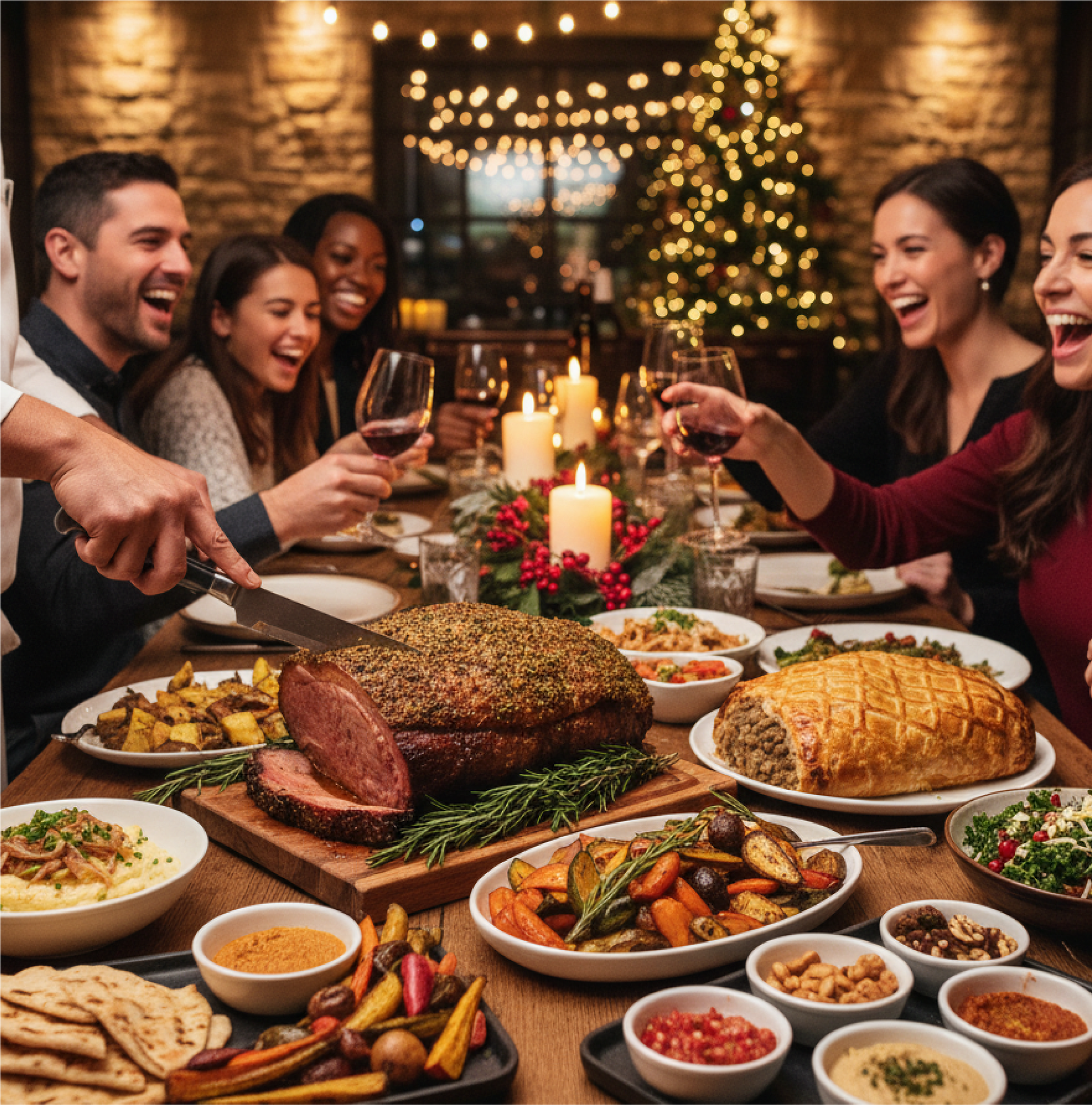
The holiday season is your annual Super Bowl. It’s the time of year when consumer willingness to spend peaks, with an expected 64% of diners planning to order festive meals from restaurants. Yet, many operators fail to maximize this opportunity, sticking to tired menus and missing out on the demand for elevated, trend-forward dining experiences. The difference between a moderately successful holiday season and a breakthrough quarter often hinges on one thing: a strategically designed holiday food menu that balances profitability, operational efficiency, and cutting-edge consumer trends. In this guide, we dive into the data, showing you how to capture guests who are willing to spend 25-49% more for a memorable holiday meal. You’ll learn which menu items are guaranteed hits, how to engineer your offerings for maximum margin, and the operational tactics needed to execute flawlessly during the busiest time of the year. The Changing Holiday Dining Landscape Today's holiday diner isn't just hungry; they're looking for an event. A whopping 67% of diners are specifically seeking "more than a standard dining experience"—they want themed meals, multi-course feasts, and interactive elements. This demand translates directly into high-value bookings. Data shows a 24% surge in premium dining bookings compared to last year, proving that guests are prioritizing quality and atmosphere. Furthermore, the average consumer spending on dining out is up from $166 in 2023 to $191 per month, indicating a higher comfort level with discretionary spending. The Shift to Group and Off-Peak Dining Two critical behavioral shifts are emerging: Group Power: 52% of holiday bookings are now for parties of eight or more. Your menu and operational setup must efficiently accommodate large groups with streamlined ordering and flexible seating. Early Birds: Almost half of diners (49%) prefer to make reservations between 4:00 PM and 6:00 PM, a noticeable shift from traditional peak hours. This presents a massive opportunity to maximize table turns and staff efficiency by offering attractive early dining incentives. For small to mid-sized groups, effective restaurant consulting often involves capitalizing on these larger group bookings with fixed-price packages that guarantee check averages and simplify kitchen execution. What Diners Actually Want: Top Holiday Food Trends While the desire for an experience is growing, the dishes themselves are rooted in comfort and tradition—but with a twist. Traditional Favorites Still Reign Supreme Don't abandon the classics! They are the anchor of your holiday menu. Traditional sides, particularly potatoes, are absolute must-haves: 76% of diners favor roasted potatoes, and 75% favor mashed potatoes. Turkey, while still popular at 74%, is actually slightly edged out by potatoes! Ensure your menu features high-quality versions of staples like stuffing, prime rib, and classic desserts. Nostalgia with a Modern, Global Twist Diners crave the familiar but appreciate innovation. The key trend is taking traditional holiday dishes and infusing them with global flavors. Example 1: Instead of standard roast turkey, offer a 'Moroccan Spiced Turkey Breast' rubbed with za’atar and served with apricot-pistachio stuffing. Example 2: Reimagined sides, such as cranberry sauce infused with yuzu or a pumpkin pie spiced with a custom blend of West African peppers. Plant-Based Takes Center Stage Plant-based dining is no longer a niche afterthought; it’s the #1 restaurant trend of 2024. You must offer more than just a token salad. Menu items like a 'Root Vegetable and Mushroom Wellington' or 'Lion's Mane "Pulled Pork"' sliders offer luxurious, substantial alternatives that appeal to the growing segment of health-conscious and sustainable diners. Remember to accommodate dietary needs; avoiding plant-based options is one of the critical mistakes that restaurant marketing consultants advise against. Experience-Centric Dining Interactive elements transform a meal into an event. Consider implementing: Tableside Carving: For a premium roast beef or prime rib, tableside presentation adds drama and perceived value. Interactive Stations: A 'Build-Your-Own Holiday Mezze Platter' or customizable dessert bar allows guests to engage with the food. These experiential elements justify the premium pricing your holiday menu can command. Building a Menu Engineered for Profitability Your goal is to delight guests while maintaining a sustainable food cost percentage, ideally targeting 28-35%. Holiday menus provide the leverage to charge a 20-25% premium on specialty items compared to regular menu pricing. Even your existing popular items can handle a 15% price increase during the holiday season. The Power of Prix Fixe and Bundling The single most effective strategy for increasing average check size is bundle pricing. A three-course prix fixe menu provides perceived value to the guest while guaranteeing revenue and simplifying your kitchen’s execution. This approach, alongside proper menu engineering, can increase overall restaurant profits by 10-15%. High-Margin Heroes Where do you focus your cost-control efforts? Appetizers: These should be profit powerhouses, often boasting higher margins than entrées due to lower cost of ingredients and quick prep time. The Turkey Opportunity: Turkey prices have been significantly lower in 2024, making it a highly profitable main course when properly portioned. Overlapping Ingredients: To minimize the costly waste that plagues the industry (restaurants waste 4-10% of purchased food), design your menu so ingredients are shared. For example, the herbs used for your Prime Rib jus should also be used in your roasted vegetable side dish, reducing inventory and spoilage. Experienced restaurant consultants always emphasize designing a menu that forces the customer’s eye toward the highest-margin items while utilizing common ingredients across the entire holiday offering. Operational Strategies for Flawless Holiday Execution A sophisticated menu requires an efficient kitchen. In a time of persistent staffing shortages, operational excellence is critical to maintaining quality and controlling costs. Waste Reduction is Profit For every $1 invested in reducing food waste, restaurants realize approximately $8 in cost savings. Implement strict FIFO (First In, First Out) inventory management and maximize ingredient utilization through root-to-stem cooking (e.g., using broccoli stems for a side mash) to curb the 4-10% of food waste that eats into your profits. Focused Menu & Training Keep your temporary holiday menu focused—aim for only two to three signature holiday entrées plus a vegetarian option. This prevents kitchen overwhelm and guarantees consistency. Staff training is non-negotiable. Your servers must be experts on the limited-time offerings (LTOs), especially dietary accommodations and the ingredients. Well-trained staff are your best asset in driving the upsell of premium items. Furthermore, use demand forecasting by reviewing last year’s historical data to accurately predict necessary prep and staffing levels, a crucial step when accommodating the growing number of large parties. Marketing Your Holiday Menu for Maximum Impact Your incredible holiday menu needs to be promoted early and often. The psychological power of Limited Time Offers (LTOs) is immense; they drive an 81% increase in guest likelihood to visit. Launch your LTOs and promotions by early November, using deadlines (like November 15th for early booking incentives) to create urgency. Focus your marketing on the experience—the cozy atmosphere, the festive feeling, and the premium quality. Visual content is essential. Use social media and email marketing to showcase the beautiful plating and unique environment. Email campaigns should offer exclusive early-access to reservations or a free appetizer for booking before a specific date, capitalizing on the anticipated 15-20% growth in gift card purchases. This proactive, experience-focused promotion is the core of smart restaurant marketing consulting. Common Mistakes to Avoid Chasing Trends Over Tradition: While innovation is important, failing to offer high-quality versions of classics (like potatoes and turkey) will alienate a large segment of diners. Over-Complicating the Menu: Too many menu items slow down the kitchen and confuse servers. Keep it focused and profitable. Starting Too Late: If your promotions don't start until Thanksgiving, you’ve missed the prime booking window. Ignoring Dietary Needs: Neglecting robust plant-based, gluten-free, and allergy-friendly options immediately shuts out a significant portion of potential high-value bookings. Poor Waste Management: Allowing 4-10% of your purchased food to go to waste is the fastest way to erase your high-margin potential. Secure Your Record-Breaking Season The holiday season offers a unique dual opportunity: satisfy your guests’ desire for memorable, experience-centric dining while delivering unprecedented profitability to your business. By integrating the popularity of classic dishes with modern, high-margin twists, leveraging the efficiency of prix fixe menus, and committing to operational excellence, you can easily capture the premium spending that defines the 2024-2025 holiday diner. Implement these strategies now. If optimizing your menu and operational efficiency seems daunting, seeking professional restaurant consultants can help you streamline the process and ensure a successful, profitable end-of-year rush.
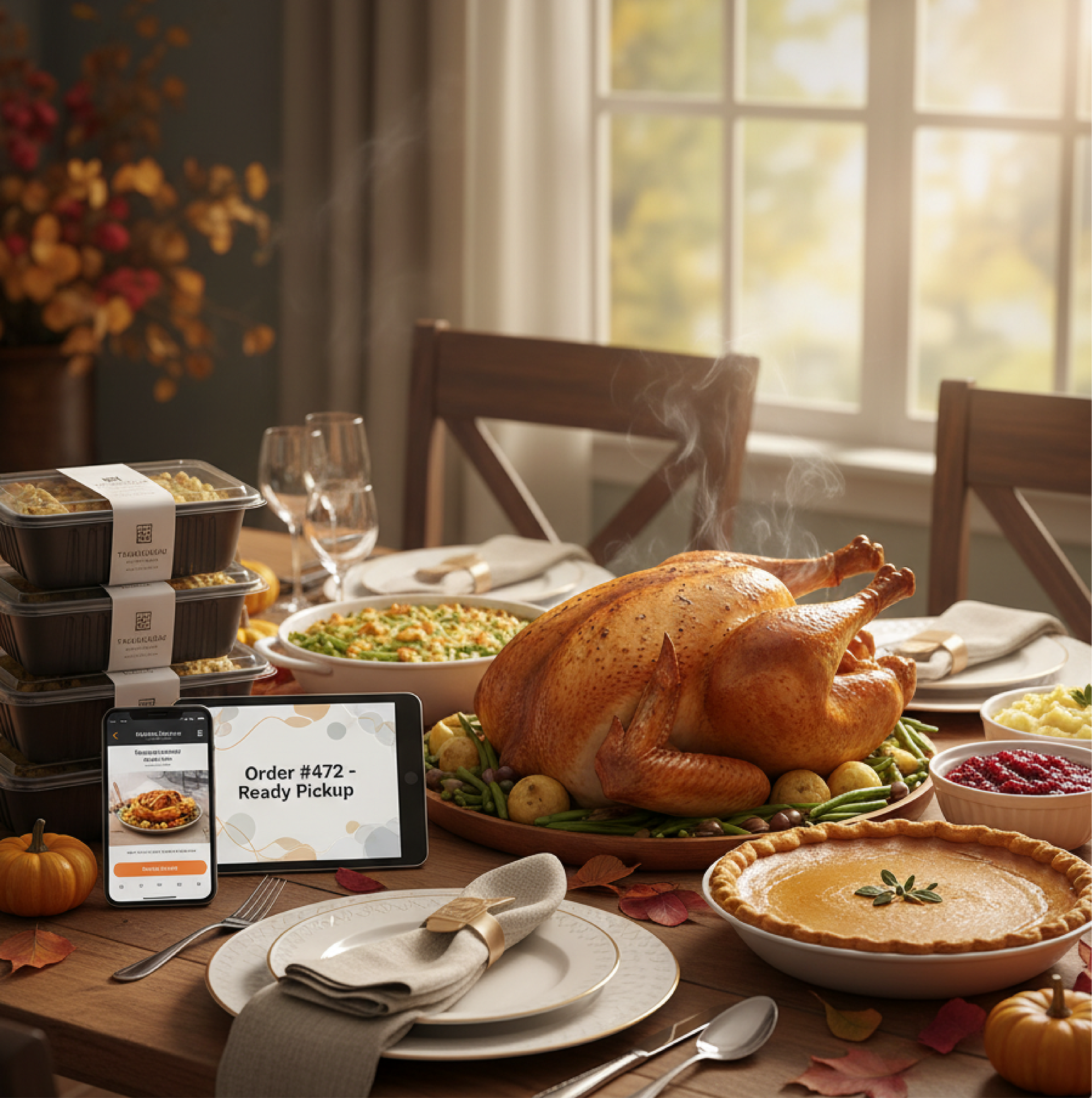
The Thanksgiving Opportunity: Why Restaurant Owners Can't Afford to Miss This Growing Revenue Stream
Don't miss the Thanksgiving revenue wave. With dine-in declining and takeout surging, find out how to craft the perfect menu and master holiday catering logistics.

The Business Impact of New ICE Raids on Latin American Restaurants in the U.S. The recent increase in immigration enforcement activity by U.S. Immigration and Customs Enforcement (ICE) is creating significant operational and financial challenges for Latin American restaurants nationwide. These establishments represent a major component of the U.S. hospitality industry, employing hundreds of thousands of workers and contributing billions to the economy. As enforcement actions intensify, restaurant operators are facing workforce disruptions, declining sales, and heightened compliance concerns. Workforce Disruptions and Labor Shortages Labor stability remains the most immediate challenge. Latin American restaurants, like many in the hospitality sector, rely on a diverse labor pool that often includes immigrants. The renewed ICE operations have led to sudden employee absences, voluntary resignations, and difficulty recruiting new team members. In certain regions—particularly in states with large Latino populations such as Texas, California, and Florida—restaurant owners report losing up to 20% of their workforce within weeks of increased enforcement activity. These shortages are directly affecting service capacity, operational hours, and menu consistency. Many restaurants have been forced to shorten hours or reduce offerings due to the inability to staff kitchens or front-of-house positions adequately. Financial Consequences and Sales Declines Revenue declines are also being reported across multiple markets. Restaurants that depend on local, community-based traffic are experiencing a measurable drop in dine-in sales, estimated by some operators at 25–40%. Although delivery and takeout channels remain active, these models generally yield lower margins and higher third-party fees. For smaller, family-owned establishments that operate on tight cost structures, this loss of volume poses a substantial threat to profitability. Additionally, some suppliers and distributors serving these restaurants are seeing reduced order volumes, suggesting the ripple effect of the enforcement environment extends through the broader food-service supply chain. Compliance, Risk, and Legal Exposure The renewed focus on worksite enforcement has also introduced higher compliance costs. Restaurant owners are investing additional time and resources into verifying employment eligibility, reviewing documentation, and training managers on proper I-9 procedures. Legal counsel specializing in immigration and employment law have noted a rise in consultation requests from independent operators seeking to mitigate liability. Recent court decisions—such as the October 2025 ruling in Missouri and Kansas that limited ICE’s authority in certain warrantless arrest cases—offer partial guidance, but the regulatory environment remains fluid and regionally inconsistent. Industry and Market Implications If current trends continue, analysts expect a temporary contraction in the Latin American restaurant segment, particularly among small independent operators. Larger multi-unit groups with established HR and compliance infrastructure are better positioned to absorb the disruption, while single-unit restaurants may face consolidation pressures. At a market level, the reduction in operating capacity could result in slower service, higher menu prices, and shifts in customer demand toward larger chains or non-affected cuisines. Over time, these dynamics could alter competitive balance in key metro markets where Latino dining establishments have historically been strong community anchors and economic contributors. Conclusion The escalation of ICE enforcement actions has introduced new layers of operational risk to Latin American restaurants across the U.S. The effects are being felt in workforce stability, sales performance, and compliance costs. For owners and operators, the path forward will require enhanced documentation practices, proactive communication with legal advisors, and flexible business models capable of adapting to ongoing labor and regulatory volatility. While the cultural and community value of these restaurants remains undeniable, the current climate underscores the need for strategic management and preparedness within one of America’s most resilient—and now most scrutinized—restaurant sectors.

Introduction Nice work — you made it to the third and final post in our Fall/Winter 2025 LTO series. If you ran the creative and the marketing, this piece is the practical follow-through: how to make the promotion actually work on the floor, in the kitchen, and at the ordering screen. This is written for local operators running one to a few locations. You’ll find simple, usable steps for training your team, keeping inventory sensible, working with suppliers, and measuring what matters — all in a friendly, low stress way you can put into practice this week. ________________________________________ Training: keep it short, clear, and useful Don’t overcomplicate training. Make one short sheet that tells the LTO’s story, lists ingredients and allergens, shows a plated photo, and gives a couple of quick lines for staff to use with guests. Everyone signs off before the first shift so you start with the same baseline. Practice matters more than paperwork. Run one short practice service, taste the item with servers, and let cooks walk through the steps together. Use short 3–7 minute refreshers between shifts, and reward the first people who finish training with a small perk — free coffee, a shift meal, or a gift card. That little boost gets buy-in fast. Training Module Front-of-House (FOH) Back-of-House (BOH) Product Knowledge Item description, ingredients, allergen info, menu positioning Recipe steps, ingredient handling, equipment settings, plating standards Upselling & Service Sales scripts, suggestive selling, handling questions or complaints N/A Execution Steps Ticket entry, special notations, communicating sell-outs Prep timing, portioning, plating, special handling Troubleshooting What to do if item is 86’d, customer confusion, long waits Substitutions, batch prep issues, out-of-stock protocols Communication Reporting guest feedback trends, service issues Communicating backlogs, shortages, or failures to FOH ________________________________________ Pre-launch: simple planning that prevents headaches Think of an LTO like a weekend pop-up. Make a short checklist and a timeline — nothing fancy. Key items: recipe locked, POS updated, staff trained, promos printed, and the first shipment received. Run a friends-and-family shift if you can; that one rehearsal solves more problems than pages of notes. On launch day, gather your team for a 10-minute huddle. Confirm who’s doing what, check par levels, and name the escalation path: who calls the vendor, who covers the line, and who talks to customers if there’s a delay. Clear roles keep the day calm. ________________________________________ Recipes: clear, consistent, and forgiving A good recipe is your best friend. Write it down with weights, a photo, and one or two “must-do” steps (e.g., don’t over-sauce, finish under heat for 30 seconds). Keep it practical for the pace you work at — if it’s a busy lunch spot, simplify plating; if you’re a dinner service with servers explaining dishes, include talking points. Add a short troubleshooting note: “If browned too quickly, lower heat 20%” or “If sauce runs, hold off on garnish until right before serving.” Little tips reduce mistakes and save time. ________________________________________ Pars and ordering: be conservative at first When you launch something new, start small. Estimate daily sales, add a 10–15% buffer, and order that first delivery. Check sales the first two days and adjust. If you overshot, use excess ingredients in specials, staff meals, or daily features — don’t let them sit and spoil. Highlight LTO items on your order guide so the buyer doesn’t miss them. If your supplier can do smaller, more frequent deliveries, ask — it’s a great way to avoid waste without sacrificing availability. ________________________________________ Inventory basics without the fancy tech If you don’t have integrated systems, that’s fine. Use a simple spreadsheet or a clipboard count. Do a quick count at the start and end of each day during week one, then every few days after that. Track usage versus what you expected and adjust orders fast. For perishables, rotate stock (FIFO), label prep with dates, and keep an eye on any ingredient that shows up only for the LTO. If something’s not moving, mark it down or make a staff special before it goes bad. ________________________________________ Work with suppliers like a partner Tell your supplier about the LTO early — what you need, when, and how much. It helps them plan and keeps you from surprise shortages. Ask if they’ll do smaller cases or staggered drops for the first week. Also, confirm what happens after the run ends: will they take back unused cases, or can you return unopened boxes? A supplier that understands your rhythm is worth more than a slightly cheaper price. ________________________________________ Waste control that won’t stress you out Design the LTO so parts of it can be reused: a sauce that works on a sandwich, a protein that can top a salad, or a garnish that refreshes a daily special. Promote an “end of run” special two days before the takedown to move extra product. Small changes like this cut waste and recover your cost if sales are slower than hoped. ________________________________________ Keep score — but keep it simple Track a few things each day: how many LTO items sold, food cost for the item (roughly), any extra labor time, and guest feedback. A short end-of-day note from the manager on what went well and what didn’t is incredibly useful. Run a short post-mortem after the promotion: what sold, what didn’t, what to tweak next time. This isn’t about spreadsheets for spreadsheets’ sake — it’s about learning so the next LTO runs smoother. ________________________________________ Quick examples that make the point We’ve seen small operations win big with these basics. One owner tested a fried-sandwich special and learned they needed one extra fryer basket during lunch — simple fix, big lift in speed. Another turned leftover specialty slaw into a discounted side two days before the takedown and cleared their remaining stock while keeping guests happy. Small adjustments, quick reactions, and honest team feedback make the difference. ________________________________________ Final checklist — what to do this week • Lock the recipe and print one quick cheat sheet. • Run one practice service and get signoffs. • Order conservatively and plan a mid-week reorder. • Label and rotate all LTO ingredients. • Do daily counts during week one and jot manager notes. • Run a short post-mortem and capture two things to change next time. body content of your post goes here. To edit this text, click on it and delete this default text and start typing your own or paste your own from a different source. Goliath Consulting Group is a restaurant consultancy group based in Atlanta, Georgia. To learn more about our services including menu development, business strategy, marketing, and restaurant operations, contact us at http://www.goliathconsulting.com or email us at getresults@goliathconsulting

